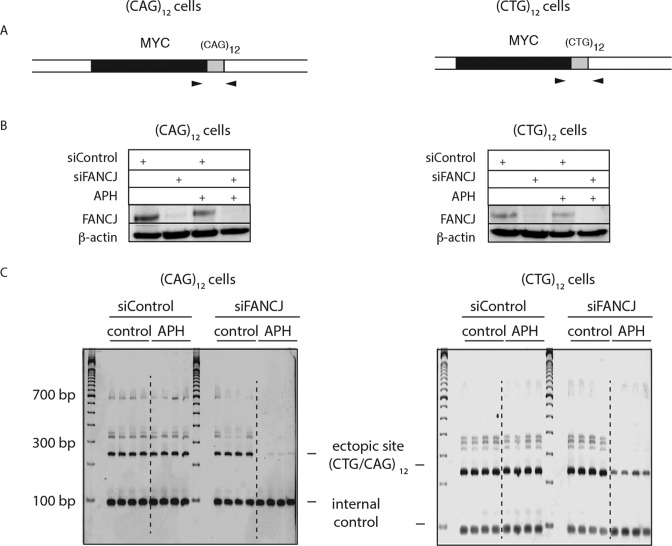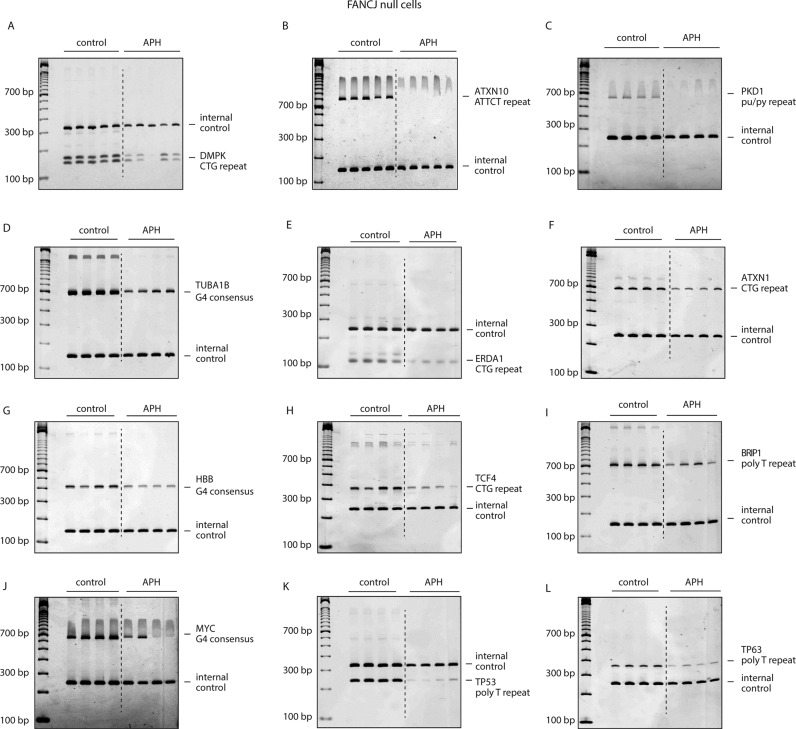Nucl. Acids Res. (2016) 44 (14): 6803–6816. doi: 10.1093/nar/gkw433
The authors wish to make the following correction to their article:
Figure 2B: an error was introduced in the reagent labelling. The + signs for siControl should be above lanes 1, 3; the + signs for siFANCJ should be above lanes 2, 4; the + signs for APH should be above lanes 3, 4.
Figure 2.
FANCJ knockdown leads to loss of ectopic CTG/CAG microsatellite signals in (CTG/CAG)12 cells under replication stress (APH). (A) Maps of the ectopic loci. (B) Western blots. Whole cell extracts were isolated after treatment of cells with siControl or siFANCJ for a total of five transfections and 0.2 μM aphidicolin, or parallel untreated cultures and immunoblotted for FANCJ. (C) Duplex spPCR with primers spanning the ectopic (CAG/CTG)12 repeats and primers for a non-repeat internal PCR control site.
Figure 4K: the bands labeled “internal control” and “TP53 poly T repeat” have been switched compared to the other figures.
Figure 4.
FANCJ−/− patient cells treated with aphidicolin are prone to microsatellite signal loss at multiple endogenous sites. (A–L) Duplex spPCR across endogenous repeated sequences in DNA from FANCJ−/− patient fibroblasts with or without aphidicolin (0.5 μM) treatment.
New Figures 2 and 4 are provided below.
The Authors apologise to the Readers for the inconvenience caused.




